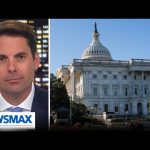Americans woke up to more questions than answers this week after NASA quietly delayed the public release of high-resolution images of the mysterious interstellar visitor known as 3I/ATLAS. Harvard’s Dr. Avi Loeb — no partisan gadfly but a respected scientist who has been right more than once — told Newsmax’s Finnerty that the delay and the object’s odd behavior deserve real scrutiny, even raising the chilling possibility it could be a “mothership” releasing probes. The public deserves straight talk, not radio silence.
The basic, non-sensational facts are undisputed: the ATLAS survey first reported the object on July 1, 2025, and NASA confirms 3I/ATLAS will swing closest to the Sun around October 30 before slipping behind the solar glare and out of sight for Earth-based observatories. Hubble images from July already put an upper limit on the nucleus size and show activity consistent with a comet, which is why NASA categorizes it as an interstellar comet — but those same images left room for debate about oddities other observers are now flagging. When public agencies limit information at moments like this, trust erodes fast.
Dr. Loeb has been explicit that several anomalies — unusual composition signals, strange polarization behavior, and a trajectory that some say aligns oddly with historical radio signals — mean we cannot dismiss the technological possibility out of hand. He’s urged governments and space agencies to look at worst-case contingencies and even floated practical ideas like redirecting or repurposing existing spacecraft to gather more data, a scientist’s common-sense approach to an extraordinary, once-in-a-lifetime event. This sort of skeptical rigor should be encouraged, not maligned.
So why the hush? Part of the answer is technical — telescopes and orbiters must calibrate and process raw data before releasing it — but there’s also a painfully familiar administrative excuse: a lapse in federal appropriations left portions of NASA’s public communications and non-essential operations muted at precisely the moment we most need transparency. When taxpayer-funded agencies go quiet during critical windows, the vacuum gets filled with rumor and suspicion, and that’s not accidental; it’s avoidable.
Conservative Americans should be the first to demand accountability: Congress funds NASA and the American people own its discoveries. If images exist that might change our understanding of humanity’s place in the cosmos, delaying their release for bureaucratic convenience or political theater is unacceptable. Lawmakers must press NASA for a schedule and insist that scientific data paid for by American taxpayers be released promptly and with full context, not withheld behind a veil of agency discretion.
This moment is about more than spectacle or clicks; it’s a test of government competence and honesty. We can admire scientists who raise uncomfortable possibilities while also demanding that agencies operate with transparency, especially when national security and public trust are on the line. If there’s nothing to hide, release the data and let the scientific process run in daylight where citizens can see it.
Hardworking Americans deserve to know what’s happening above our heads without being treated like children. We can be curious, cautious, and patriotic all at once: support rigorous scientific inquiry, fund the capable missions that keep us safe, and insist that our institutions answer to the people who pay for them. If extraterrestrial life is out there, let’s meet the discovery with courage, oversight, and the kind of clear-eyed leadership that puts American interests and truth first.




